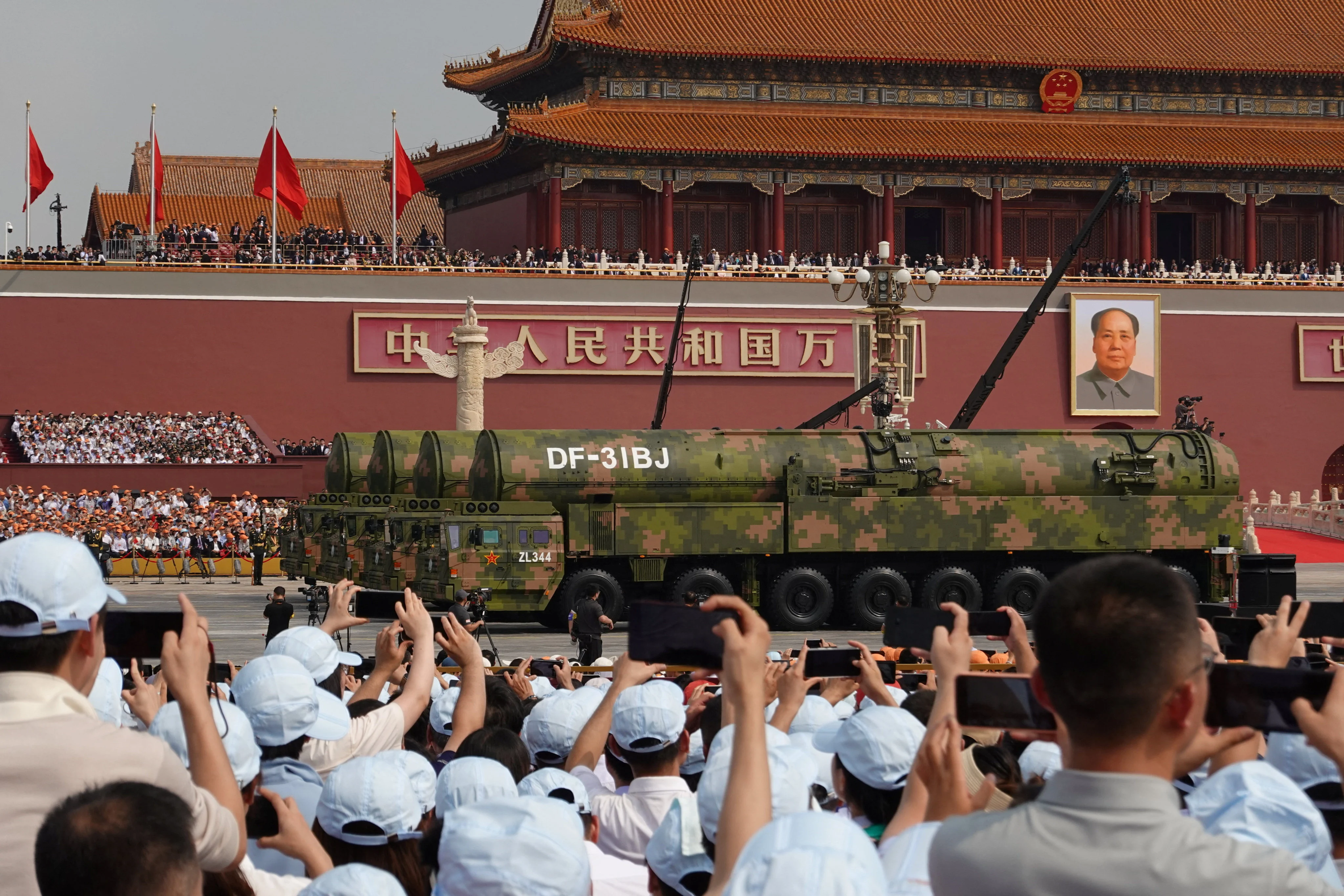By William Zheng
Copyright scmp

As the West speculated about the capabilities of Chinese missiles seen at its huge military parade in Beijing this month, it was their names – inspired by the words of Mao Zedong – that drew attention in China.
The People’s Liberation Army revealed some of its newest weaponry during the September 3 parade that marked 80 years since the end of World War II.
Among the most talked about were the latest additions to the Dongfeng series of strategic missiles, with the land-based DF-61, DF-31BJ and DF-5C intercontinental ballistic missiles all making their debut.
Dongfeng, meaning “east wind”, was the name given to the first of these missiles in 1958. According to state media, its designers have said that the name was inspired by a famous speech given by Mao, the founding father of the People’s Republic of China.
“Either the east wind prevails over the west wind, or the west wind prevails over the east wind,” Mao said in the 1957 speech in Moscow, referring to communist China and the capitalist West.
The names of other Chinese missiles were also inspired by Mao’s words.
Julang, or “great wave”, is a series of intercontinental submarine-launched ballistic missiles. The latest model, the JL-3, was seen for the first time at this month’s parade.
The name Julang has been attributed to a poem written by Mao describing the revolutionary change he wanted to bring to China, according to a 2015 report by Liaowang, a news magazine published by state-run Xinhua.
“Mountains! Like great waves surging in a crashing sea, Like a thousand stallions. In full gallop in the heat of battle,” Mao wrote in one of his Three Short Poems in 1934.
Also unveiled at the parade was the JL-1, China’s first nuclear-capable air-launched ballistic missile.
Its full name, Jinglei, translates to “sudden clap of thunder”. While official coverage did not explain the name, the words have been found in another Mao poem and highlighted on social media.
In the 1964 poem Celebrating the Success of Our First Nuclear Test, Mao wrote: “Ten years of hideous history return to dust, A thunderclap rolled up a hurricane.”
Similarly, China’s air-to-air missiles are known as Pili, or “thunderbolt” – a name attributed to Mao’s 1927 poem The Autumn Harvest Uprising, an insurrection he led in parts of Hunan and Jiangxi provinces.
“Amid gloomy clouds on the autumn harvest day, a thunderbolt of rebellion burst forth,” the poem reads.
The PL missiles were also seen in the parade. In May, the PL-15E export variant made headlines when it was reportedly used by the Pakistani military to shoot down several Indian fighter jets during their brief conflict.
Four new anti-ship missiles were also revealed during the parade – the YJ-15 missile and the YJ-19, YJ-17 and YJ-20 hypersonic missiles.
The series is known as Yingji, or “eagle strike”, a name that is derived from a 1925 poem written by Mao called Changsha that refers to missiles sinking enemy ships.
“Eagles cleave the air, Fish glide in the limpid deep; Under freezing skies a million creatures contend in freedom,” the poem reads.
New additions to the Hongqi series of air defence missiles also made their debut at the parade – the HQ-20 air defence system and the HQ-9C, a variant of the HQ-9 long-range semi-active radar homing surface-to-air missile.
The name Hongqi means “red flag” – a potent symbol in Chinese Communist Party ideology. In his poetry, Mao frequently used the image of red flags in the wind to symbolise the party’s unity, defiance and resolve in its revolutionary struggle.
One example is the 1935 poem Mount Liupan, written after the Red Army climbed over the mountain in the northwest, which reads: “High on the crest of Mount Liupan, Red banners wave freely in the west wind. Today we hold the long cord in our hands, When shall we bind fast the Grey Dragon?”



